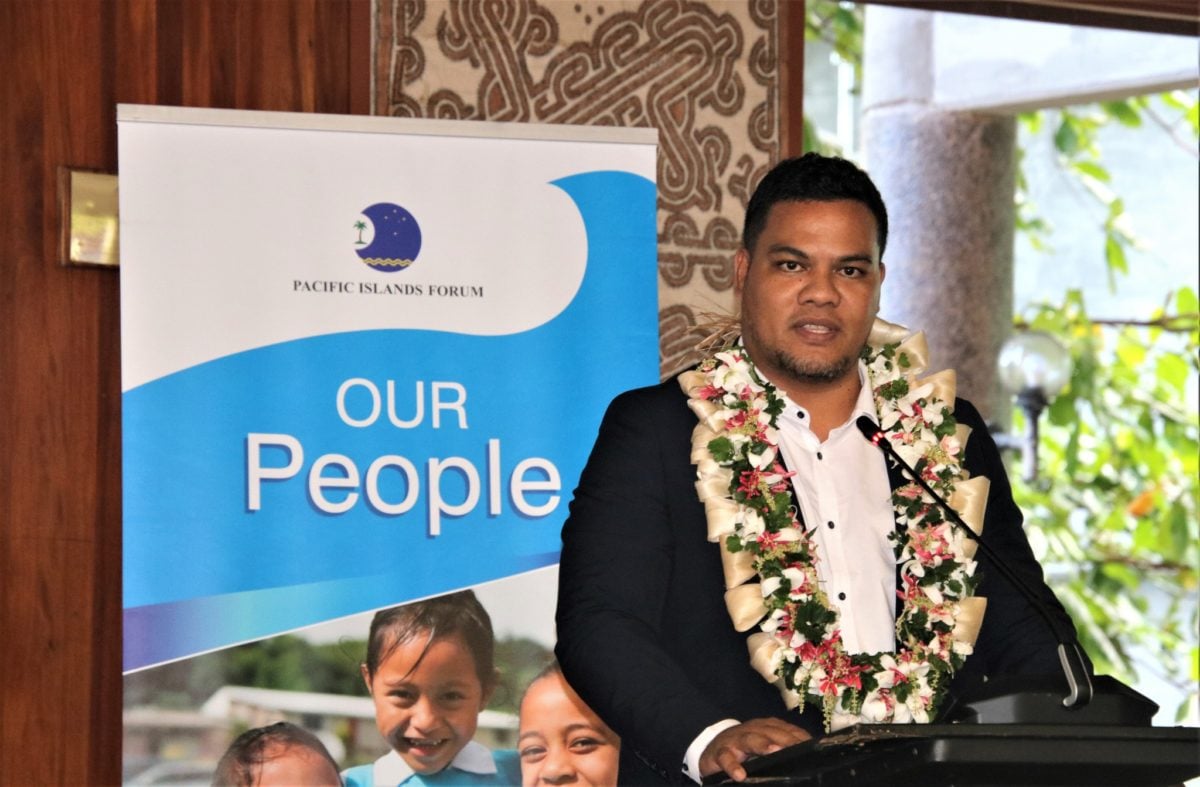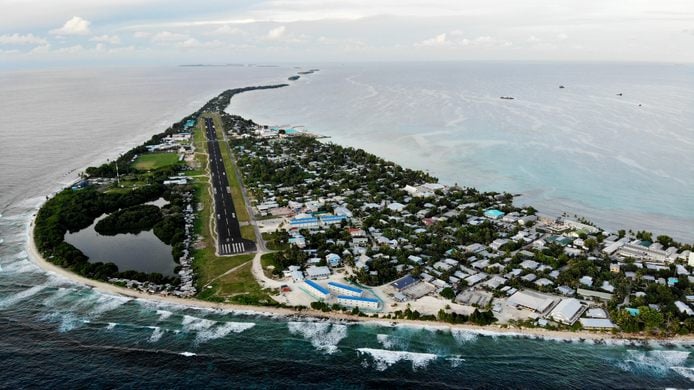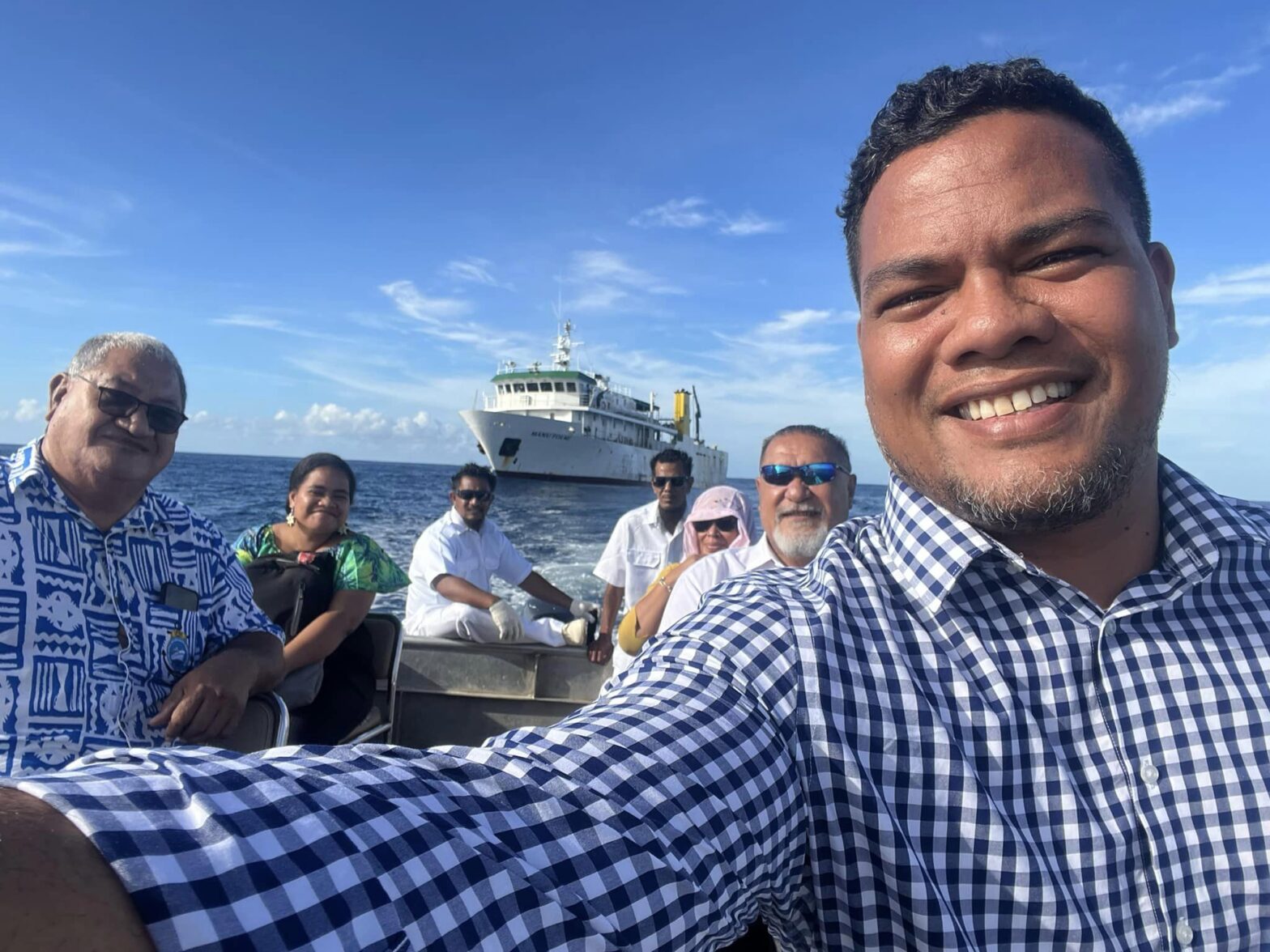Real threat from rising sea level has forced Tuvalu to future proof its existence as a nation despite considerable challenges.
In what it calls its “worst case scenario” preparation, Tuvalu’s recently unveiled “Future Now” project is an effort to preserve as much about the island nation as possible using new technology and before it is completely submerged.
“Under my Ministry’s Future Now Project, Initiative 2 comprises efforts to secure international recognition of Tuvalu’s Statehood as permanent and its existing maritime boundaries as fixed despite the effects of sea level rise and climate change on Tuvalu’s land territory,” Tuvalu’s Minister for Justice, Communications and Foreign Affairs Simon Kofe told PACNEWS.
“The Future Now Project is our worst-case scenario plan. Our current adaptation and mitigation strategies would have to fail before we relied fully on the Future Now Project to protect us. The Future Now Project seeks to cover the full range of situations we might face in a truly worst-case scenario. If these options fail, we are also working with our Pacific partners on a regional framework on climate mobility to assist all Pacific nations in the case that relocation becomes unavoidable,” Kofe said.
Known as “Te Ataeao Nei” in the local language, the project has three broad Initiatives, of which Initiative 2 is the most challenging as it anticipates the continued recognition of Tuvalu as a sovereign nation even when it no longer physically exists as an island.
For that to happen, a lot of realignment of domestic laws and foreign policies are taking place, in particular, building in that recognition into existing and new bilateral treaties with other countries.
“Under the Montevideo Convention, which is seen as setting out the definition of a state in international law, a state is supposed to have a permanent population, a defined territory, a government, and the capacity to enter into relations with other states. If Tuvalu were to have no physical territory due to climate change and sea level rise, Tuvalu would be missing one of the conditions under the Montevideo Convention that would make it recognised as a state. This is why Tuvalu’s statehood would be challenged if it lost its physical territory,” said Kofe.
“Initiative 2 comprises efforts to secure international recognition of Tuvalu’s Statehood as permanent and its existing maritime boundaries as fixed despite the effects of sea level rise and climate change on Tuvalu’s land territory. We are working to develop customary international law through the signing of bilateral joint communiques on statehood and maritime zones. The more countries that sign these, the more the international community will recognise our statehood and boundaries as permanent. As noted, the Pacific Islands Forum has also already declared the EEZs of all Pacific Islands nations as permanent, and, recently, the UK House of Lords released a report expressing their support for this proposition. Everything we are doing is in conversation with regional and international fora—we are always working to communicate our ideas and ensure they are accepted at all levels,” said Kofe.
So far, countries that have officially recognised Tuvalu’s continued sovereign existence under its “Future Now” project are Venezuela and St Kitts and Nevis.
It’s a race against time, as scientific studies estimate most low-lying islands will be completely submerged over the next 50 years due to rising seas.
Tuvalu, according to Kofe, is already in the throes of this climate crisis.
“Let me give you an example. In images of the video shoot I did for COP26, you can see behind me the concrete base of a U.S WWII gun. This concrete base used to be situated on land, but it is now completely surrounded by the sea due to soil erosion caused by sea level rise. This is a clear example of the impacts climate change has had on our people. Where there once was land, there is no longer. Right now, 40% of the central district of Tuvalu’s capital Funafuti is already below sea level at highest tide measures,” said Kofe.
“We also feel the effects of increased salinity in our lands and fresh water, which negatively affects our local crops. Due to climate change and sea level rise, we now see more extreme weather events—especially more intense changes in weather, droughts, and much stronger tropical cyclones, which have wiped out parts of islands in some cases. When you live on thin strips of islands, and can see the lagoon on one side and the ocean on the other, climate change and sea level rise become very real.”
Kofe said activities undertaken under Initiative 2 are:
- Embedding in the 2020 Tuvalu Foreign Policy Te Sikulagi a provision that Tuvalu will only form new bilateral relations with nations that recognise Tuvalu’s Statehood and existing maritime boundaries as permanent;
- Establishing new diplomatic relations and reaffirming existing relations via joint communiques that provide for bilateral recognition of Tuvalu’s Statehood and existing maritime boundaries as permanent;
- Overseeing work to amend Tuvalu law to recognise the nation’s Statehood and maritime boundaries as permanent despite the effects of sea level rise;
- Pursuing various other efforts to develop customary international law on the retention of Statehood and maritime boundaries in the face of sea level rise so that these issues gain traction as recognised legal norms and become accepted standards in international law;
- Supporting Pacific regional and international efforts that align with national actions, such as promoting the Declaration on Preserving Maritime Zones in the Face of Climate Change-related Sea-Level Rise, which was collectively endorsed by Pacific Islands Forum (PIF) Leaders in 2021.
The Tuvalu archipelago has 124 islands/islets of which 11 are inhabited with a total national population of close to 12,000. Its ambition for continued existence should it go under will be facilitated mainly by its current “digital nation” initiative, in which it is digitizing most functions of government.
This story was produced with the support of Internews’s Earth Journalism Network.




